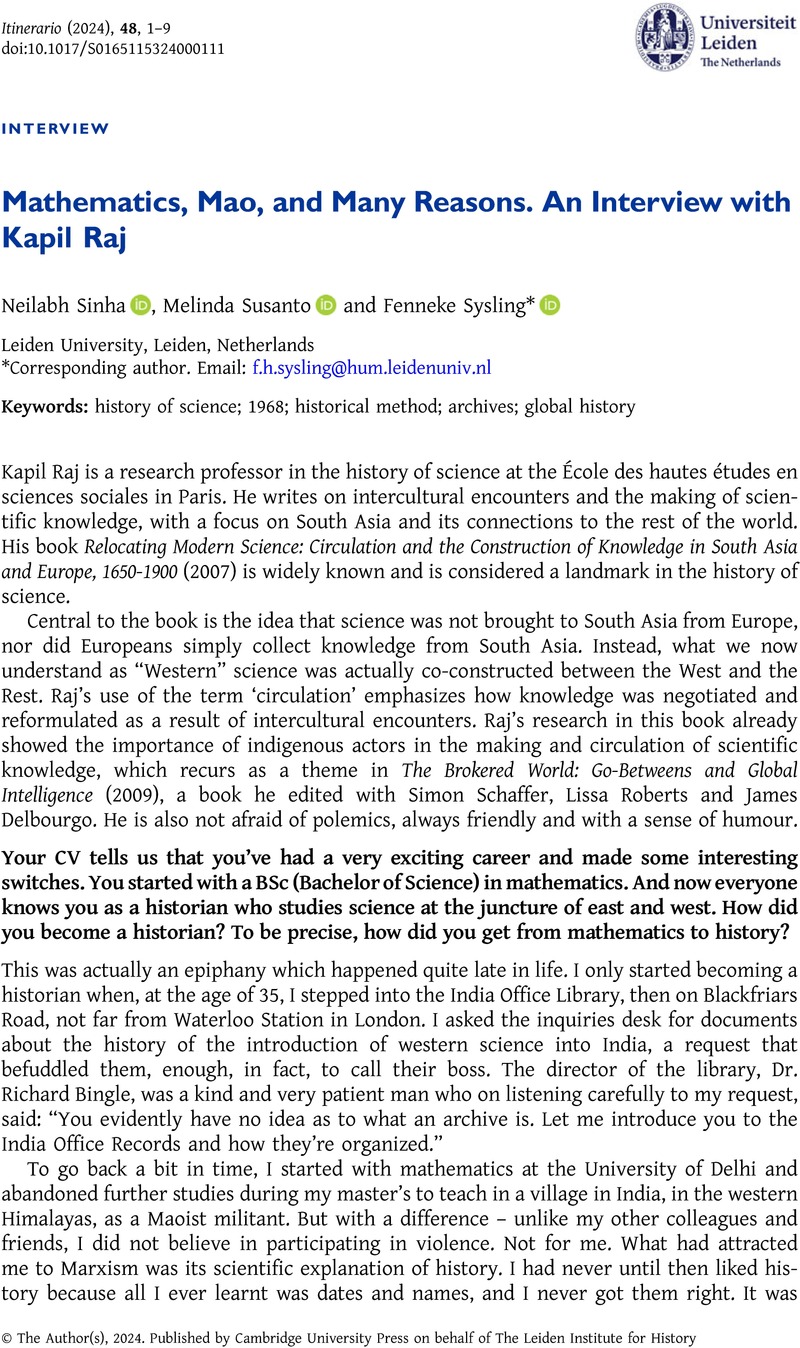No CrossRef data available.
Article contents
Mathematics, Mao, and Many Reasons. An Interview with Kapil Raj
Published online by Cambridge University Press: 10 May 2024
Abstract
An abstract is not available for this content so a preview has been provided. Please use the Get access link above for information on how to access this content.

Information
- Type
- Interview
- Information
- Itinerario , Volume 48 , Special Issue 1: The View from the Sea. The Practice of Early Modern Transoceanic Commercial Navigation , April 2024 , pp. 1 - 9
- Copyright
- Copyright © The Author(s), 2024. Published by Cambridge University Press on behalf of The Leiden Institute for History


